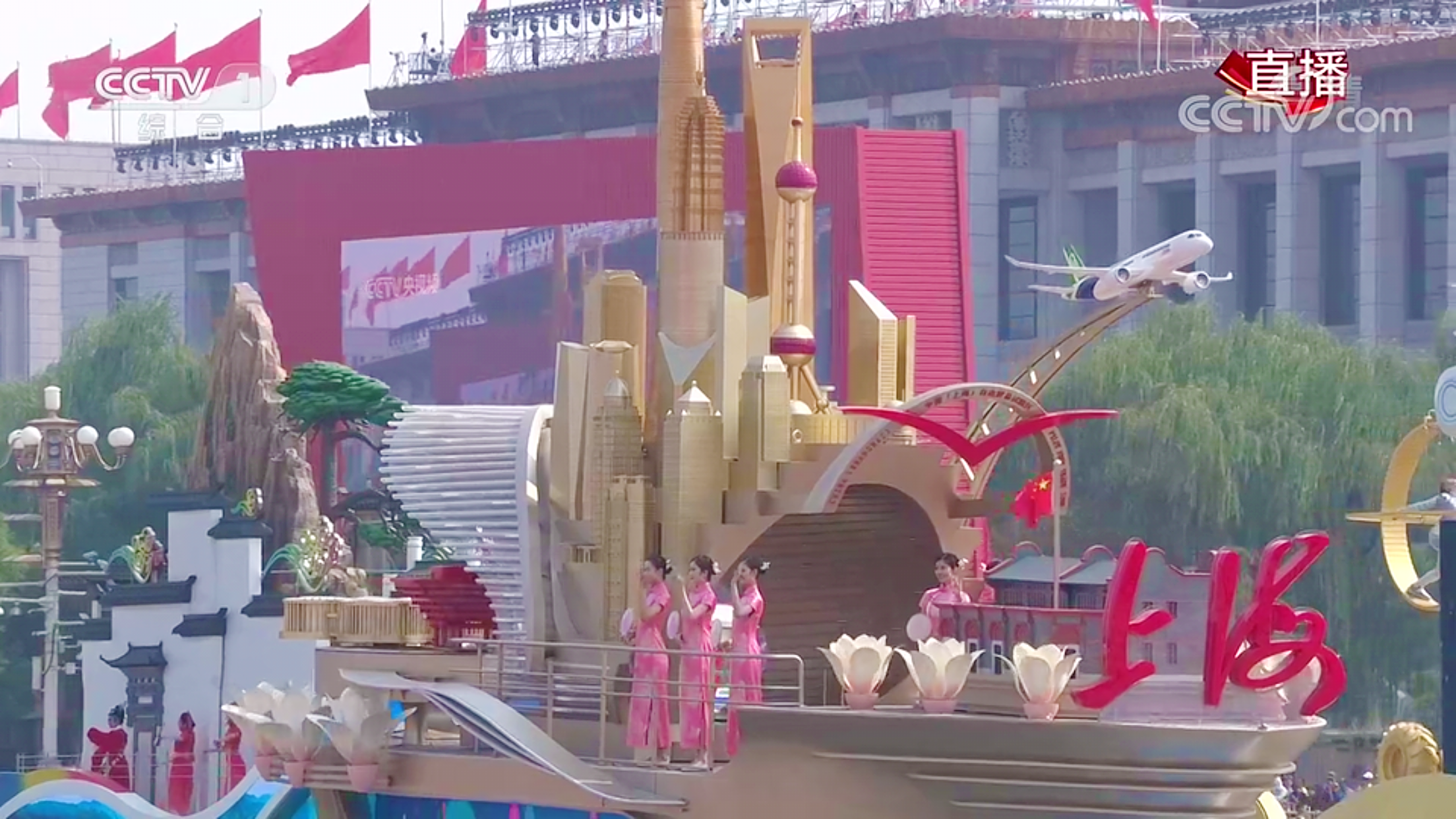A mass parade was held at the Tiananmen Square in Beijing on October 1 to celebrate the 70th anniversary of the founding of the People’s Republic of China. A total of 100,000 people and 70 floats joined the mass parade, showing a magnificent picture of China’s development in the new era.

(Shanghai float along the Chang’an Avenue)
With the Chinese characters for “Shanghai” at the ship’s bow, the float carried seven girls dressed in Shanghai-style Qipao holding fans. Where do these girls come from? How unique is the Qipao they wear? Let us reveal the answers.
Post-00s work hard for 15-second show
The seven girls on the Shanghai float are all students majoring in Fashion Design and Performance of the Fashion • Art Design Institute of Donghua University. The oldest of them is a senior born in 1998, and the youngest was born after 2000.

(Float and actors)
From facial expression to physical movements, the girls have trained hard for the special event throughout the summer. Han Zheyu, Director of the Shanghai Greater Donghua Fashion and Innovation Center, acted as the coordinator and team leader of the project. He said, “Our training is not as hard as that of the soldiers, but the requirements are identically high. We not only represent our university, but also represent the Shanghai people. Only 15 seconds are given for the float to pass through the core area of Tiananmen, which makes the opportunity particularly precious.” In order to let the girls better understand and display the Shanghai culture, Han Zheyu asked them to learn about Shanghai culture and history through books, film and television works, expressing the cultural connotation of the Shanghai-style Qipao more vividly.The student leader Wang Guanhua said in excitement: “This is an unforgettable experience. I am so proud to be a Chinese!”
“Flower Fairy” from Shanghai celebrates the birthday of the motherland
The Shanghai-style Qipao also has a story behind it. The design team consisting of teachers and students from Donghua University began the research and comparison from May this year, and finally selected the Shanghai-style Qipao featuring “white magnolia” as the main element. The Qipao was given a lovely name: Flower Fairy.

(Design drawing of Flower Fairy)
Li Chen, a teacher from the Shanghai International College of Fashion and Innovation, told the reporter that “Flower Fairy is designed based on the simple shape of white magnolia, with pale pink and champagne as the main color, embodying the elegance of oriental women and perfectly interpreting the essence of Shanghai-style Qipao culture integrating both Chinese and Western elements.” The match of classic silk with shiny, chipped diamond materials highlights better visual effects.
The Shanghai-style Qipao was originated from traditional national women’s wear. In the mid-1940s, its style was innovated and improved, and it is no doubt the best choice to represent Shanghai culture.
As the city flower of Shanghai, white magnolia embodies the spirit of “inclusiveness and pursuit of excellence.” Li Jun, Executive Vice Dean of Shanghai International College of Fashion and Innovation, said, “Clothing plays an important role in the grand celebration of the 70th anniversary of the founding of the People’s Republic of China. It should not only meet the requirement of overall artistic design, but also show the new fashion trend of contemporary China as well as the new Shanghai-style elements. As fashion designers, we are very proud to be involved in the project.”
The appearance of Shanghai-style Qipao in the celebration displays the latest achievements of Donghua University on the integration of Shanghai-style Qipao’s history, culture, creativity, design and industrial development as well as the synergy between disciplines and the industrial chain. Colleges and universities should give full play to the wisdom of innovation and the “spill-over effect” that reflects the mission of cultural communication, better propelling the construction of Shanghai as an international cultural and fashion capital and Shanghai International Fashion Innovation Center, and the “Belt and Road” initiative.


